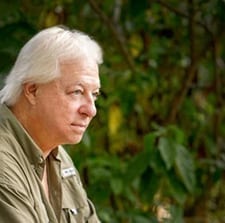The Old Hand Pump
June 19, 2017
By Tom Poland
“The pump don’t work ’cause the vandals took the handles,” wrote Bob Dylan as he closed out “Subterranean Homesick Blues.” Vandals have yet to get the handle of the pump you see here, but I don’t know if it works. I didn’t try it. Wish I had. Let’s just say that it works and that’s why it didn’t end up in the scrap metal pile. Let’s add that if you work the handle enough, your reward will be gurgling, spurts of water.
I place old hand pumps alongside windmills as ingenious environmentally clean ways to meet needs. Once in a blue moon, I’ll stumble across one. You’ll find one at the ruins of Sheldon Church near Yemassee on Old Sheldon Church Road. Saw one in Georgia too near Athens.
The one you see here is just off Highway 23 in Ward, South Carolina. You’ll find it to the right of Royal Foods. Just look for the old Union 76 gasoline sign, a bit of nostalgia itself. Go find it and give the handle a try. Behind you, the Ward water tank looms large, a tub of water in the sky that put a lot of hand pumps out of business.

There was a time when building a home depended on access to water that was fairly close to the surface. That changed when electricity and drilled wells came along. Thanks to those modern conveniences you could build a home most anywhere and you could lift water deep from Mother Earth’s bosom. For folks out in the country an electric pump and tank meant water was as close as the faucet—as long as they had power. An ice storm that knocked the power out for days, however, meant no water. That’s not a problem with hand-pumped water.
Yep, a measure of independence comes with an old hand pump. Survivalists and people wishing to live off the grid install hand pumps. People who want a back-up water supply do too. In developing countries, hand pumps provide vital sources of water. Here in the USA, we look upon them as vestiges of yesteryear, as nostalgic reminders of times gone by. Just turn a faucet and there it is, the miracle of life called water.
The old hand pump, referred to as a cistern by some, had to find water fairly close to the surface, within 26 feet I read. Any deeper, and it was out of reach. Hand pumps are making a comeback of sorts. You can still find suppliers who will sell you one. Some people install them as an alternate water supply. Some install them for a touch of nostalgia, and some install them as a reliable source of water. Be nice to have one out in the tomato patch. Just hang a bucket on it.
Someday I hope to discover an old home place with an outhouse, smokehouse, and hand pump intact. Finding an old pump is a long shot for sure so I’ll settle for a hand-dug well like my granddad had. A stone fireplace and chimney sound good too. Life’s necessities all taken care of in a simple way. No need for electricity. If I find such a place, I expect to see an old country store down the road a ways, one with a vintage gas pump and signs that American Pickers look for, Royal Crown Cola and Camel Cigarettes. Until that discovery takes place, I’ll be content with the scene here.
I don’t know when the old pump was installed. Long ago, for sure. Maybe a dowser, ye old water witch, is part of the old pump’s history. I can see an old fellow in coveralls and a straw hat walking around with a forked limb. “Dig here,” he says as the limb bends toward the ground. The old cistern is proof positive they dug and hit a vein of water.
As for the old building with the Union 76 sign, it’s a throwback to another era as well. If you make a drive down SC Highway 23, you’ll find this scene from yesteryear in Ward. Go. For a moment or two you close your eyes and pretend you’ve traveled back in time. Then drive on through peach country. Be prepared to see no peaches. Done in by cold weather. Just like the old pump was done in by electricity.
Visit Tom Poland’s website at www.tompoland.net
Email Tom about most anything. [email protected]
Tom Poland is the author of twelve books and more than 1,000 magazine features. A Southern writer, his work has appeared in magazines throughout the South. The University of South Carolina Press released his book, Georgialina, A Southland As We Knew It, in November 2015 and his and Robert Clark’s Reflections Of South Carolina, Vol. II in 2014. The History Press of Charleston published Classic Carolina Road Trips From Columbia in 2014. He writes a weekly column for newspapers in Georgia and South Carolina about the South, its people, traditions, lifestyle, and changing culture and speaks often to groups across South Carolina and Georgia, “Georgialina.”














